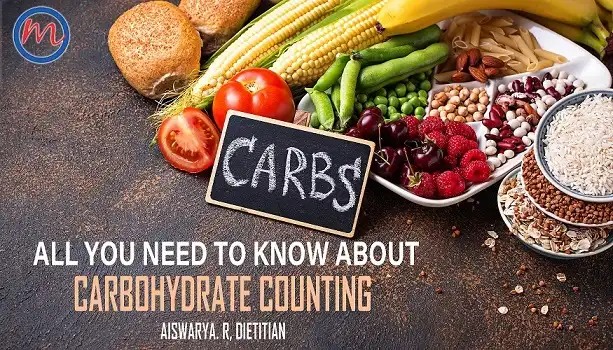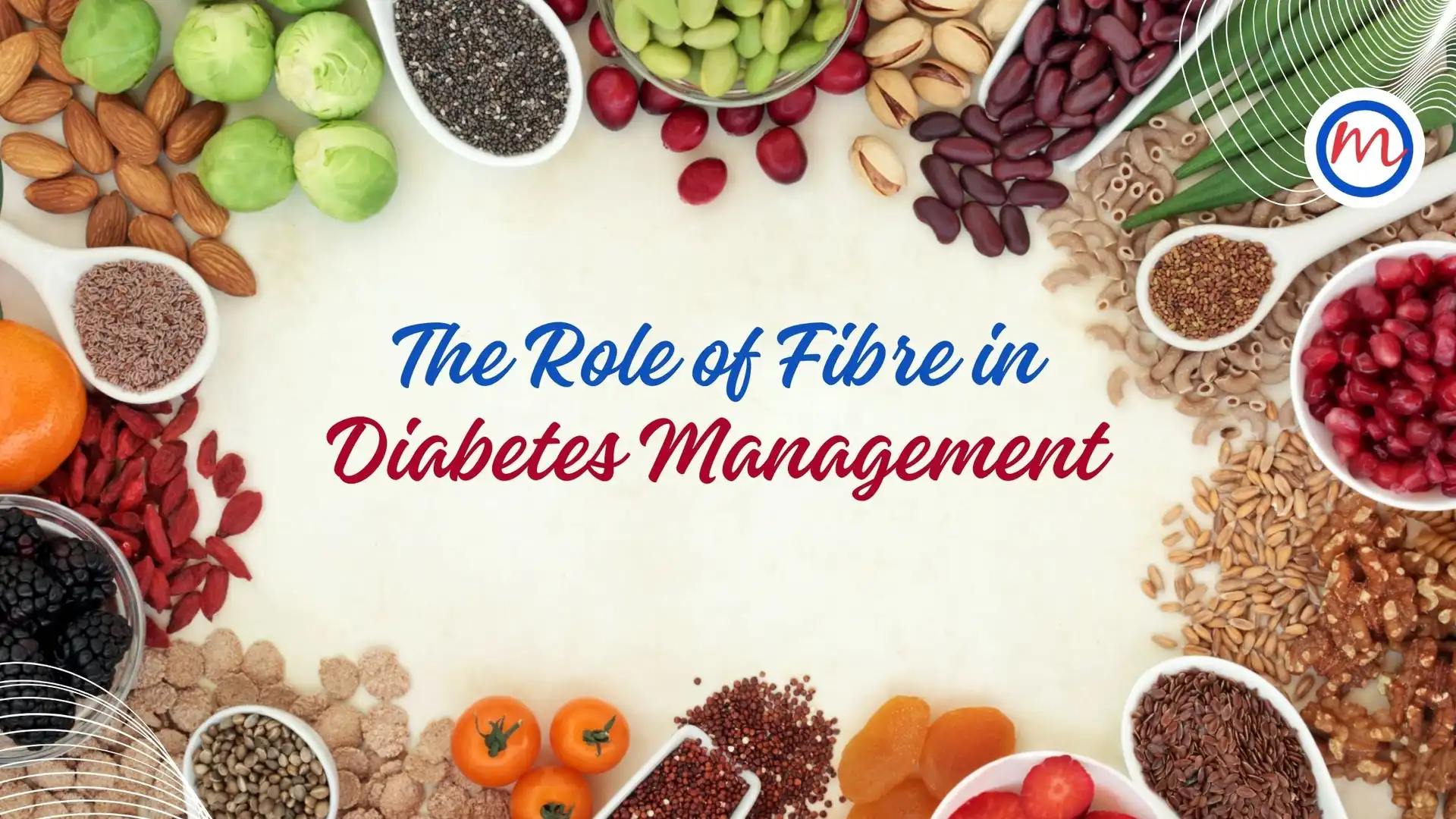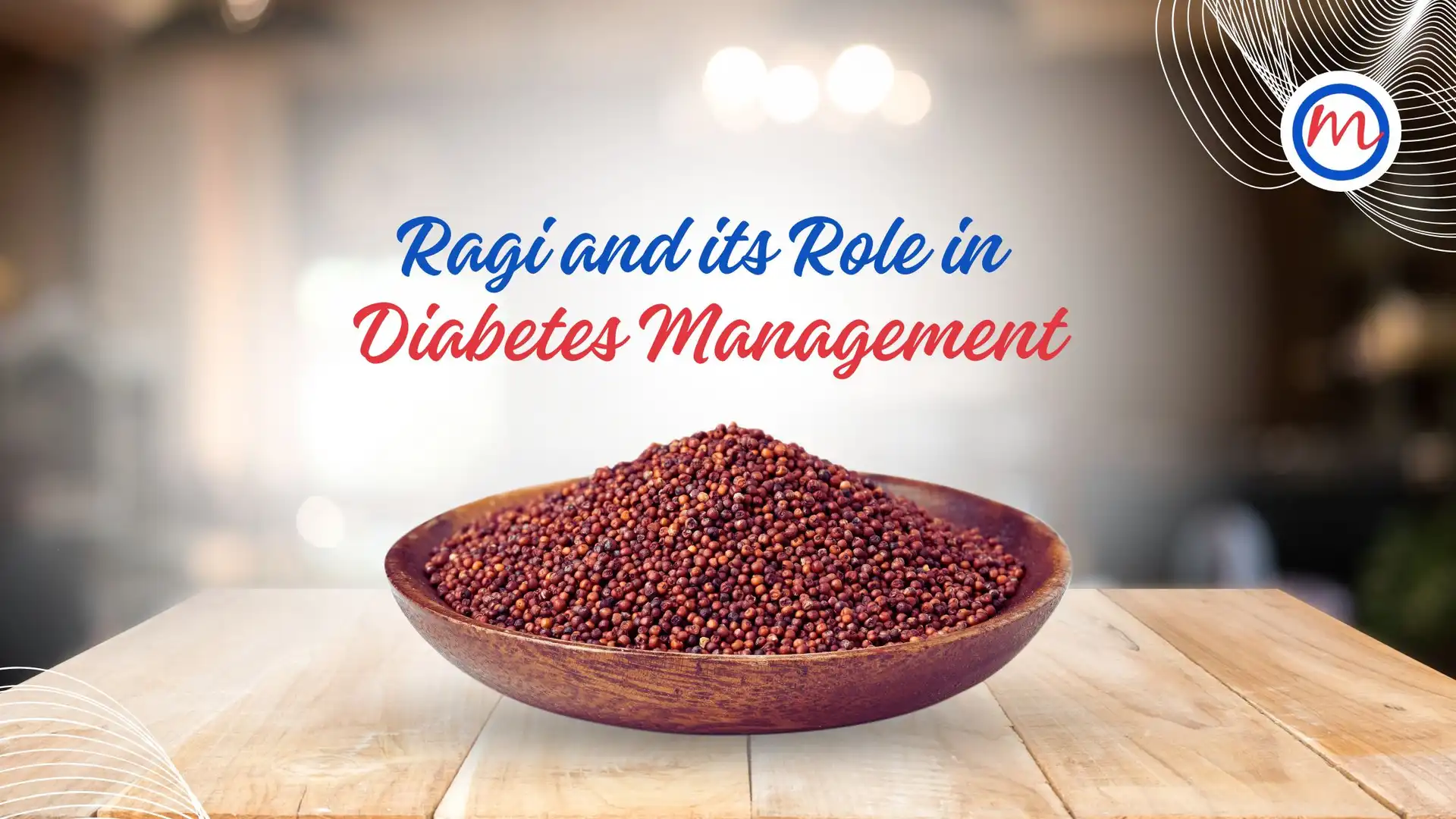Carbohydrate counting or “Carb Counting (CC)” is a meal planning technique for people with diabetes for managing blood glucose levels by tracking the grams of carbohydrate consumed at meals. With better patient education and awareness, carb counting has become an important step in diabetes management. People with diabetes can be benefited with this approach via improved glycaemic control and quality of life.
BENEFITS :
Evidence suggests that CC may have positive effects on metabolic control
- The flexibility of meals and snacks allows children and teenagers to manage their Type 1 Diabetes more effectively within their own lifestyles.
- Helps to calculate Insulin doses.
- Reduces the frequency of hypoglycemia.
- Helps to keep the post-meal glucose values within range and thereby reducing glycosylated hemoglobin concentration (HbA1c).
- Improves the quality of life.
WHAT ARE CARBOHYDRATES?
Carbohydrates, as starches and sugar are found in:
- Cereal products like idli, dosai, uppuma, bread, rice, chappathi, breakfast cereal etc.
- Dairy products particularly milk, curd/ yogurt
- Pulses like green gram, Bengal gram, rajma, soya bean, etc contain complex carbohydrates that are digested and slowly converted to glucose.
- Fruits and certain starchy vegetables like potato, corn etc.,
- Sugar, honey and sugar-sweetened foods
When the carbohydrate-rich foods are eaten, they cause a sharp rise in blood glucose levels.
HOW TO CALCULATE THE DOSES OF INSULIN?
INSULIN TO CARBOHYDRATE RATIO (ICR), INSULIN SENSITIVITY FACTOR(ISF), AND GLYCAEMIC INDEX (GI)
-
INSULIN TO CARBOHYDRATE RATIO (ICR) :
The insulin-to-carb ratio (ICR) is individualized and depends on one’s sensitivity to insulin, i.e, how many grams of carbohydrates can cover 1 unit of insulin. ICR allows people to obtain their insulin needs at mealtimes on the basis of the carbohydrates be consumed at that time, the blood glucose level, and their anticipated physical activity. For the identification of the carbohydrates-to-insulin ratio, the empirical method of the 500 rule or 300–450 rule, for very young children who need less than 10 units of insulin a day, is often used.
For instance,
A 25 year old man with diabetes
Height : 5’6” (168 cm )
Weight : 62 kg
BMI: 22 kg/m2
-
CALCULATING ICR/CHO COVERAGE DOSE:
The Insulin carbohydrate ratio or Carbohydrate Coverage dose can be done in two different methods
- BY 450/500 Rule
- BY BODY WEIGHT
The calculations come as following :
1. BY 450/500 RULE
500 rule for the users of aspart, lispro and glulisine.
500 / Total Daily Insulin ( Basal + Bolus)
so, 500 / 34 = 14.7 =15 gm
1 unit of insulin will cover approximately 15g of carbohydrate
450 Rule for Users of Regular Insulin
i.e, 450 /34 = 13.2 = 13gm
i.e, 1 unit of insulin will cover approximately 13 gm of carbohydrate
-
-
- CALCULATING TOTAL DAILY INSULIN DOSE (TDI)
-
TDI = 0.55 X Weight in kg
-
-
- therefore, 55 x 62.0 = 34 units of insulin / day
- CALCULATING BASAL AND BOLUS INSULIN DOSE
-
Bolus Insulin Dose= 50% of TDI
-
-
- So, 50% of 34 units = 17 units to cover the total mealtime CHO/ day
-
2. BY BODY WEIGHT
2.8 X body weight (in pounds) / TDI
So, 2.8 x (62.0 x 2.2) / TDI
2.8 x 136.4 lb / 34 = 11.2 gm
i.e, 1 unit of insulin will cover approximately 11 gm of carbohydrate
-
INSULIN SENSITIVITY FACTOR ( ISF)
The insulin sensitivity factor (ISF) is a correction algorithm of pre-prandial glycaemia. In particular, ISF indicates how many mmol/L (or mg/dL) 1 unit of insulin lowers blood glucose by; it is obtained by dividing 1800 (rapid analogue) or 1500 (regular insulin) by the TDD. ISF also needs to be individualised for each patient. Regarding infants and toddlers, ISF is generally higher, approximately 100–150 mg/dL.
Correcton Factor (CF) = 1500 or 1800/ TDI
So, 1800 /34 = 52.9 or So, 1500 /34 = 44.1
Therefore,1unit of insulin will reduce by 53 mg/dl of blood glucose.
Difference between actual blood glucose and target blood glucose level Correction factor
So, Actual blood glucose level before breakfast = 226 mg/dl
Target blood glucose level before breakfast = 120 mg/dl
Then,
226 – 120 / 53 = 2 units
Therefore, Total dose before breakfast = CHO insulin dose + 2 units
-
GLYCAEMIC INDEX
The other factor to be taken into account is Glycaemic Index or GI.

The GI expresses the glycaemic response after eating a known amount of carbohydrates contained in food but in relation to the same amount of carbohydrate contained in white bread. The glycaemic area measured 90 min after food intake is expressed as The GI expresses the glycaemic response after eating a known amount of a percentage of the standard. Using the GI and eating low-GI food may produce modest benefits in the control of postprandial hyperglycaemia. Moreover, to consider both the quality and the amount of carbohydrates, the concept of the glycaemic load was introduced.
CONCLUSION
Judicious calculation of Insulin Carbohydrate Ratio and Insulin sensitivity Factor, with regular, follow up and timely adjustments of Insulin, this is definitely a helpful and strong approach for the people with diabetes in achieving a wonderful glycaemic control throughout their life. Balanced nutrition along with carbohydrate counting, excercise, medication and regular blood sugar monitoring helps in achieving good control over your Hba1c and thereby reducing the probabilities of comorbidities.




